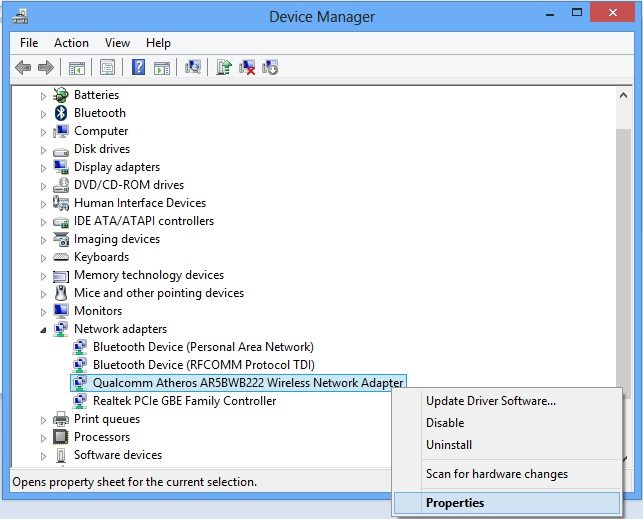- VIA Network & Wireless Cards Driver Download
- Via Network & Wireless Cards Driver Download 64-bit
- Via Network & Wireless Cards Driver Downloads
- Via Network & Wireless Cards Driver Download Windows 7
- Via Network & Wireless Cards Driver Download Windows 10
Typical Workflow for Designing Neural Networks
VIA Network & Wireless Cards Driver Download

Each neural network application is unique, but developing the network typically follows these steps:
Via Network & Wireless Cards Driver Download 64-bit
- Access and prepare your data
- Create the artificial neural network
- Configure the network’s inputs and outputs
- Tune the network parameters (the weights and biases) to optimize performance
- Train the network
- Validate the network’s results
- Integrate the network into a production system
Classification and Clustering of Shallow Networks
- Select Network → Network Setup or Setup Network Connection; Select Expert, AutoCustom. If you don't see this option, move to the next step. Select Wireless, Wireless Setup, or Wireless LAN. Select the available connection method you want to use to connect your TV to the network, and then follow the on-screen instructions.
- In June 2019, Via expanded its footing in Australia by launching another on-demand public transportation network called Cooee in The Ponds and Schofields, two suburbs of Sydney. The network is designed to connect more people to the Sydney Metro as a first- and last-mile service.
- Automate remote network monitoring with packet capture. Monitor and diagnose networking issues without logging in to your virtual machines (VMs) using Network Watcher. Trigger packet capture by setting alerts, and gain access to real-time performance information at the packet level.
Via Network & Wireless Cards Driver Downloads
MATLAB and Deep Learning Toolbox provide command-line functions and apps for creating, training, and simulating shallow neural networks. The apps make it easy to develop neural networks for tasks such as classification, regression (including time-series regression), and clustering. After creating your networks in these tools, you can automatically generate MATLAB code to capture your work and automate tasks.
Preprocessing, Postprocessing, and Improving Your Network
Preprocessing the network inputs and targets improves the efficiency of shallow neural network training. Postprocessing enables detailed analysis of network performance. MATLAB and Simulink® provide tools to help you:
1: a fabric or structure of cords or wires that cross at regular intervals and are knotted or secured at the crossings ribbons, lace and embroidery wrought together in a most curious piece of network.
- Reduce the dimensions of input vectors using principal component analysis
- Perform regression analysis between the network response and the corresponding targets
- Scale inputs and targets so they fall in the range [-1,1]
- Normalize the mean and standard deviation of the training data set
- Use automated data preprocessing and data division when creating your networks
Improving the network’s ability to generalize helps prevent overfitting, a common problem in artificial neural network design. Overfitting occurs when a network has memorized the training set but has not learned to generalize to new inputs. Overfitting produces a relatively small error on the training set but a much larger error when new data is presented to the network. Learn more about how you can use cross-validation to avoid overfitting.
Two solutions to improve generalization include:
- Regularization modifies the network’s performance function (the measure of error that the training process minimizes). By including the sizes of the weights and biases, regularization produces a network that performs well with the training data and exhibits smoother behavior when presented with new data.
- Early stopping uses two different data sets: the training set, to update the weights and biases, and the validation set, to stop training when the network begins to overfit the data
“I ended up running another coax line to my TV room dedicated to MoCA, and it was worth it. Viewing on-line TV using Ethernet over MoCA blows my 802.11ac connection out of the water – no more interminable waits for content to load. No more stutters or frame freezes. MoCA seems to be a perfect complement, if not replacement in some cases, to Wi-Fi, and I can see why Verizon, Comcast and others use it for their installs.”
Chris Taylor
Director, RF & Wireless Components
Strategy Analytics
MOCA vs. Wi-Fi for Live Video Streaming to YouTube, Twitch, Facebook
In this video see how MoCA is independently tested and proves more reliable and faster than Wi-Fi when streaming.
VIDEO INDEX:
01:17 - How MOCA works
02:29 - Outbound live stream via Wi-Fi
05:28 - Outbound live stream via MOCA
08:02 - Final thoughts
“By now, it’s kind of established fact that nearly everybody in a household at any given moment is on some kind of device.'
“Are There Local YouTube Stars?” P.J. Bednarski in his VidBlog, MediaPost, May 14, 2015
“Many consumers experience poor home network performance and congestion problems, and the number will increase as the number of Internet-connected devices in the home climbs,” said John Barrett, director of consumer analytics for Parks Associates. “Wired solutions are appealing options for resolving these problems.”
See end user research by Parks Associates, “Consumer Interest in Wired Solutions to Wireless Home Network Problems.”
Improve your existing network.
Via Network & Wireless Cards Driver Download Windows 7
Does Internet TV and movie streaming leave you buffering?
Click HereMake your home network faster and better.
Is your home network not up to speed?
Click HereVia Network & Wireless Cards Driver Download Windows 10
Fix your wireless dead zones.
Does your wireless not reach every room?
Click Here